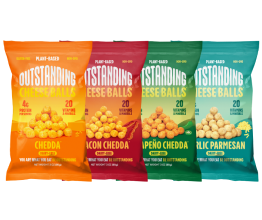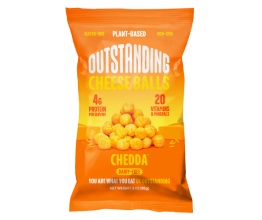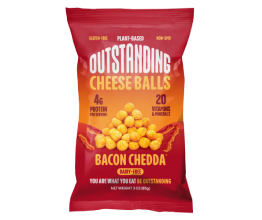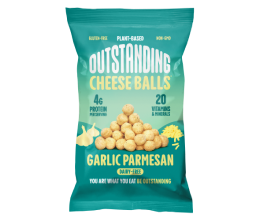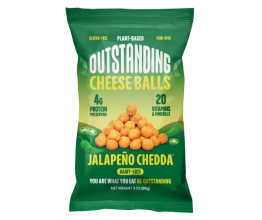Maitake Mushroom: Uses and Benefits
With thousands of different species and interesting uses in medicine and food, mushrooms are literally everywhere. Believe it or not, some people even dedicate their entire lives to the study of mushrooms and their amazing abilities. That’s cool and all, but we’ll stick with eating them on the occasional slice of pizza.
You don’t need to be a mycologist (thank goodness) to explore the funky fungi that the world has to offer. Learn a little bit about each marvelous mushroom and see what they have in store!
One of our favorite mushrooms is called maitake, known for its many culinary and medicinal uses. It has an intriguing look, a delicious flavor, and texture, plus many health properties that can benefit your body and mind.
Today we’re exploring the ins and outs of the maitake, giving you all the relevant facts and figures so that you can add them to your home cooking repertoire. We’ll also talk about a few outstanding snacks that use maitake as a key ingredient and all the good stuff that they can give you. Let’s learn what makes maitake such a fun guy (get it?).
Maitake Mushroom Basics
What exactly is a maitake mushroom, and what makes it unique from the thousands of other members of the mushroom kingdom? We’re pretty sure that not all mushrooms can be eaten, but there’s probably more to it than that.
Origin and Appearance of the Maitake Mushroom
The maitake – recognized by scientists as Grifola Frondosa – is a species of mushroom native to China, Europe, and North America. Its scientific name comes from a mythical beast resembling a half-lion, half-eagle. That’s right. This mushroom is so good that it’s literally legendary.
The word maitake translates to “dancing mushroom” in Japanese but depending on who you ask, you might also hear this mushroom called hen-of-the-woods, ram’s head, or sheep’s head.
These names give us a slightly better idea of what this mushroom looks like: large clusters of multiple gray-brown caps, featuring curled or wavy shapes that create a tightly-packed appearance of multiple fans twisted and bunched together. Basically, what we’re saying is that if you saw it out in the wild, you’d probably be majorly freaked.
Maitake is a polypore mushroom, meaning it forms huge fruiting bodies on the sides and at the bases of trees. The fact that these mushrooms can span many feet in height and width while weighing up to 40 kilos, which explains why some call maitake king of mushrooms.
Finding Maitake
While maitakes have been enjoyed for many centuries in Asia, western markets have only recently jumped headfirst into learning about these mushrooms.
Since the 1980s, maitakes have been grown commercially, although the world’s best chefs will tell you firsthand that the best maitakes are found in the wild, foraged by hand, and brought fresh to the kitchen. If it sounds like a lot of work, that’s because it is.
Sure, you can buy maitakes online or in a store, but you might be wondering how you can find these unique mushrooms in the wild.
Before you go all hunter-gatherer on us, there are a few things to consider. For starters, you need to be in the northern part of the temperate zone sometime in September or October.
Since maitake invades the roots and lower regions of large trees like oaks, beeches, and other fruit-bearing trees like persimmon, apricot, and more, you’re going to want to be in a wooded area.
Just bear in mind that maitakes are rather sensitive to environmental conditions like heat, moisture, and competition with other native species. They are difficult to find and therefore fetch quite a price on the market. Any time you’re eating wild mushrooms, you also have to be super careful about what you’re grabbing—not all shrooms are your friends.
Maitake Lookalikes
When you’re scrounging around for maitakes in the wild, it’s important to be able to identify some of the imposters that look strikingly similar to the maitake.
As you know, many mushrooms are inedible, while others are downright poisonous—sorry to put a damper on your foraging dreams. Meripilus Sumstinei is a common lookalike, although it has darker caps with hints of black.
Sparassis Spathulata has a spongier texture and can often be mistaken for maitakes as well.
Finally, a bracket fungus called Chicken of the Woods is commonly thought to be maitake, so make sure you do plenty of research before throwing any of these mushrooms in the sauté pan! In fact, unless you’re absolutely sure, it’s probably better to leave it to the professionals.
Health Benefits of Maitake Mushrooms
Whether you buy maitake fresh from the store or pick some up off the forest floor, you’re probably interested in what these bad boys can do for your health.
You’re in luck because maitakes are one of the most nutritious foods on the planet! Here are some health and nutrition facts you should know about the legendary maitake.
Key Components and Nutrition
A single serving (one cup) of maitake mushroom has an impressive nutritional panel, with essentially zero fat, just a few carbohydrates (under 5g), and a nice boost of protein (1.5 g).
Since maitakes are largely water weight, they are rather filling and will leave you satisfied with balanced energy levels for many hours.
It’s not a bad balance of macros, but maitakes really shine in the micronutrient and vitamin category. That same one-cup serving of maitake includes high levels of Vitamin D, key B Vitamins, and some essential minerals like calcium, potassium, and magnesium as well.
Maitakes also contain an abundance of powerful free amino acids and organic acids, many of which are lacking in vegetarian and vegan diets due to low protein intake. Plus, they taste pretty darn good.
If you’re someone who doesn’t eat animal products and needs a boost of nutrition, adding maitake mushroom to your regimen isn’t a bad idea at all!
Bioactivity and Adaptogenic Properties
Here’s where things get interesting with the benefits of the maitake mushroom. The ingredient has long been considered by many cultures to be an adaptogen, meaning it strengthens and balances key systems of the body with its unique chemical structures.
For instance, Japanese scientists have claimed that maitakes can boost the immune system, lower blood glucose (good for diabetics), positively impact blood pressure, and even assist in weight loss.
Other researchers have made connections with healthy cholesterol levels through maitake consumption, and even the ability to better defend the body against diseases like cancer and Alzheimer’s.
While a lot of these claims still need more support to be conclusive, we can safely say that the maitake is a certified superfood and definitely deserves a spot in your health food repertoire.
Cooking With Maitake Mushrooms
You’d think that after that exhaustive list of health benefits that maitake mushrooms wouldn’t taste very good—but you thought WRONG. After all, it’s often those superfoods that are known for their nutrition but always seem to lack in the flavor department.
This time, it’s different! Maitake is a well-loved ingredient in various cuisines throughout the world and is surprisingly easy to incorporate into home cooking. Yes, we’re looking at you with the instant ramen and packaged mac and cheese. You can do this!
Here are a few reasons why maitake is such a great ingredient and some ways to use it well.
Deep and Distinctive Flavor
The taste of a maitake mushroom isn’t quite like anything you’ve ever tried. It has a woodsy, earthy, and somewhat spicy flavor. Depending on how it’s cooked, it can offer a range of other flavors that come out with heat and accompanying ingredients.
For example, when sauteed with a dash of soy sauce, the salty umami flavors of the maitake come to the fore. There is also some sweetness to be found in the maitake, which can be explored with teriyaki sauce and other condiments featuring residual sugars.
Most of all, maitake provides a depth of flavor to whatever dish you prepare, whether it’s a rich broth with ramen noodles, a stir-fry with meat and veggies, or ground down and used to create healthy, crunchy snacks in the oven.
Believe us when we say there is no wrong way to prepare maitake mushrooms, and they’re quite forgiving. If you’re just getting into cooking mushrooms, this is a great place to start.
Meaty, Substantial Texture
The real standout feature of maitakes is their impeccable, tender texture. They are slightly chewy, offering a satisfying bite that reminds us of perfectly cooked steak, chicken, or tofu.
That’s why so many people on the plant-based diet opt for maitake mushrooms when seeking animal product alternatives – they’re just that good!
Depending on how you cook maitakes, you can achieve a variety of different textures as well. With less heat, you get a more toothy and substantial chew, while high temps can really work to tenderize and soften the mushroom for a melty sensation.
Mouth-Watering Maitake Snacks
Craving a snack food with real, complex flavors and an impressive nutritional panel? At Outstanding Foods, we use maitakes in our flagship product, PigOut Pigless Pork Rinds!
Maitakes add so much depth to the flavor of our snacks and beef up the nutrition facts so that you’ll never regret eating the whole bag (it happens)!
If classic puffs are more your thing, try our Outstanding Puffs, which also have a little bit of gold (and by gold, we mean maitake mushrooms)! One glance at the flavors and the nutrition facts, and you’ll want to grab a few bags for yourself. Enjoy the big-league crunch and finally get a meal replacement that satisfies.
Conclusion
Maitake mushrooms have a mythical status for good reason! Try them out solo, as part of an elaborate dish, or in your next bag of tasty, healthy snacks.
Sources:
About Maitake | Memorial Sloan Kettering
